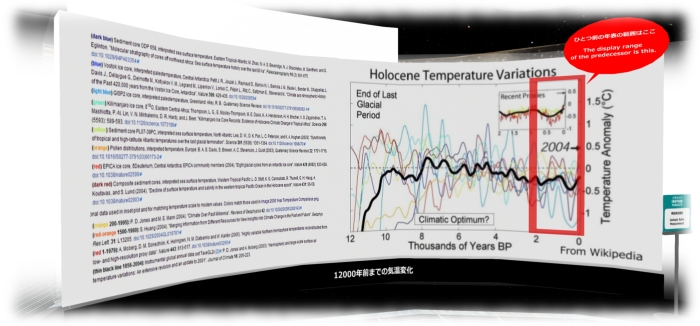
For the last several years, The Abyss Observatory has been a collaborative project formulated by the Japan Agency for Marine-Earth Science and Technology (JAMSTEC) and involving the support of a number of organisations including the National Oceanographic and Atmospheric Administration (NOAA), who host the core elements of Abyss Observatory, the Open University in the UK, and the Digital Hollywood University, Tokyo.
At the start of May, Vick Forcella nudged me about Abyss, and the fact that it will be going offline in early June. I actually hopped over to have a look around then, but it has taken me a while to get this article sorted and written. My apologies to Vick and to the organisers of the Abyss that this has been the case.

The Observatory grew out of work initially started as the Abyss Museum of Ocean Science, which closed in May 2009, and two follow-on projects. The first of these projects was Vi and Yan’s Undersea Lab, founded by the current co-creator of The Abyss Observatory (August 2009), Yan Lauria from JAMSTEC, and Vianka Scorfield, one of the creators of the exhibits at the Observatory; the second project was the Ocean Observation Museum (November 2009), which saw Rezago Kokorin, one of the creators of the original Abyss museum join the team as co-curator, and Comet Morigi join as Artistic Advisor.
The focus of the Observatory is presenting information on Earth sciences in an immersive, informative manner. As such, it covers multiple levels, extended both under the water and into the skies overhead and is also linked to a number of “external” regions, including a related Earth studies facility located at Farwell.
Finding your way around the facilities can take a little time; I personally recommend starting at the arrival hub, and taking the ground level / underwater walks which can be accessed via the beach, and which will take you under the waves, introducing you to marine life, marine monitoring, conservation and studies.

As well as meeting various members of our marine populace, the underwater walks take you through various information areas, with display models, infographics and information boards covering a wide range of subjects, including the unique Tektite Habitat, which in 1969 / 70 was the centre of research into reef ecosystems and human physiology studies related to both saturation diving and possible long-duration space missions. The Abyss facilities provide an overview of the Tektite studies, together with a cutaway model of the habitat (shown above).
Close to the Tektite habitat, visitors can find models of the bathyscaphe Triseste, which reached a record maximum depth of some 10,911 metres (35,797 ft), in the deepest known part of the ocean, the Challenger Deep, in the Mariana Trench in the Pacific in 1960. Alongside this sits Jacques Cousteau’s famous yellow underwater “flying saucer”, exploring the deeps while the Calypso is moored nearby. This part of the Observatory also includes a model of Ictineo I, a wooden hulled submarine dating from 1858.
However, the Observatory is not all about ships and submarines – as noted, there is plenty of information on marine life and on marine conservation, and there are skyborne exhibits which offer opportunities to experience very deep sea diving. There’s even the option of relaxing in an underwater bar!

The Abyss Earth studies exhibit at Farwell is entitled Only One Earth, and presents the visitor with a tour of the Earth, starting with a basic introduction to the planet on the lowest level, progressing onwards and upwards through a history of the planet measured by the geological ages, which traces the development of life on Earth. This is a fairly interactive exhibit, with information boards, info givers visitors are encouraged to click on (which display information in local chat), and buttons underneath graphics and images that reveal further information – and of course, links to assorted web pages, as with the main Abyss Observatory displays.

Unfortunately, as I am getting to this write-up a little late, some of the exhibition spaces created for the Abyss Observatory appear to have already been dismantled. The very excellent climate studies are that was once at Farwell (see above) no longer seems to be available, for example; teleports to it simply return the visitor to ground level.
When visiting the Abyss Observatory, it would be easy to dismiss it as being “old school” – the builds are prim, there is little or no mesh in evidence, etc. It’s also true that some sections of the observatory never seem to have been entirely finished. However, this doesn’t mean that the information which is presented is lacking; there is much on offer here. With a final guided tour of the facilities coming up on Saturday, May 30th at 07:30 PDT, I do recommend that anyone with an interest in marine ecology and / or the history of Earth consider paying the Observatory a visit.
SLurl Links
- Abyss Observatory main SLurl (Rated: General)
- Abyss Observatory Only One Earth, Farwell (rated: General)
This “old school” builder is pleased to note that Yan now has a substantial presence in OpenSim on jogrid — Selby blogged it: http://virtualoutworlding.blogspot.co.uk/2015/03/2014-edu-hg-community-hub-for-stem.html
LikeLike
Thank you for your introduction of Abyss.
Almost contents of closed Abyss at SE3 are in re-construction at “Farwell” and “Lily” (national Institute of Education, Singapore), “Shamash” (The Science Circle), “STEM Island” and “UIW Health Care” (University of the Incarnate Word) and “Abyss Observatory@JOGrid” (Japan Open Grid, OpenSim, Tokyo University of Information Science).
Only Afghanistan mini-Museum, UIW accept to provide “STEM Island” for full version of the Museum, can’t be re-installed, because LL locked Trill Zapatero’s account in unknown reason and requires copy of passport and Trill thinks it is invation of privacy,
LikeLike